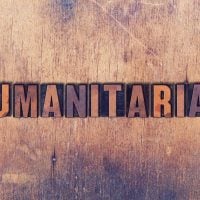Deadline: 28-May-24
The Environmental Protection Agency (EPA) has announced funding for Clean Ports Program to help ports nationwide transition to zero-emission (ZE) operations.
The EPA’s Clean Ports Program will fund ZE port equipment and infrastructure to reduce mobile source emissions (criteria pollutants, air toxics, and/or greenhouse gases) at United States ports, delivering cleaner air for communities across the country. The Clean Ports Program will also fund climate and air quality planning activities as part of a separate NOFO – including emissions inventories, strategy analysis, community engagement, and resiliency measure identification –that will build the capacity of port stakeholders to continue to reduce pollution and transition to ZE operations over time. This new funding opportunity, made possible by funding from the Inflation Reduction Act, builds on the EPA’s Ports Initiative, an ongoing program that helps the nation’s ports, a critical part of the infrastructure and supply chain, address public health and environmental impacts on surrounding communities.
Objectives
- The EPA’s goals for the Clean Ports Program are to:
- build a foundation for ports across the country to transition to fully ZE operations, positioning ports to serve as a catalyst for transformational change across the freight sector;
- reduce mobile source pollution in near port communities, especially disadvantaged communities; and
- help ensure that meaningful community engagement and emissions reduction planning are port industry standard practices.
Program Priorities
- Environmental Justice and Disadvantaged Communities:
- The EPA is committed to accelerating environmental justice (EJ) in communities overburdened by air pollution through this program. This program is a covered program under the Justice40 Initiative set forth in Executive Order 14008: Tackling the Climate Crisis at Home and Abroad. The goal of the Justice40 Initiative is to ensure that 40 percent of the overall benefits of certain Federal investments flow to disadvantaged communities that are marginalized by underinvestment and overburdened by pollution. The EPA is committed to meeting the objectives of the Justice40 Initiative.
- Specifically, this program is seeking to prioritize projects that take place in or near communities overburdened by air pollution, including those in designated PM2.5 and Ozone nonattainment areas for the EPA’s National Ambient Air Quality Standards, and with high concentrations of diesel particulate matter (PM).
- The EPA will evaluate applications on their benefits to disadvantaged communities experiencing poor air quality and the quality and extent of community engagement efforts, as defined in this NOFO.
- Additional details on the contents of applications, including specifics on what should be included in the project narrative.
- Port Transformation and Pollution Reduction:
- Through this program, the EPA is looking to build a foundation for ports across the country to transition to fully ZE operations while reducing mobile source emissions (criteria pollutants, air toxics, and/or greenhouse gases) that disproportionately impact nearby communities. The EPA especially encourages applicants to seek funds for ZE equipment and shore power infrastructure for vessels. The EPA will evaluate proposals more favorably if the applicant proposes to use at least 50% of program funds for the purchase and installation of ZE equipment or shore power infrastructure for vessels (applicants are encouraged to use no more than 50% on other expenses such as ZE technology deployment support activities, other types of eligible infrastructure, and project administration).
- Nonattainment areas:
- As required by the statute and to help ensure the program’s goal of deploying ZE technologies in communities burdened by poor air quality, the EPA plans to award a minimum of $750 million for projects in nonattainment areas across this funding opportunity.
Funding Information
- The total estimated funding expected to be available for awards under this competitive opportunity is $2.79 billion. Funding is dependent upon funding availability, Agency priorities, and other applicable considerations
- The EPA anticipates awarding 32 to 90 grants or cooperative agreements under this announcement, subject to the availability of funds, the quantity and quality of applications received, Agency priorities, and other applicable considerations.
- The EPA expects to award grants within three tiers based on project size and applicant type. Tier A is for projects between $150 million and $500 million. Tier B is for projects less than $150 million. Tier C is only for Tribal applicants. The EPA anticipates awarding 5-10 grants under Tier A, 25-70 grants under Tier B, and 2-10 grants under Tier C of this competition. Applications in each tier will be evaluated and ranked against other applications within the same tier.
- The estimated period of performance for awards resulting from this solicitation will be up to four years. The estimated project start date for awards is December 1, 2024.
Outcomes
- Desired outcomes from the projects to be funded under this announcement include, but are not limited to:
- Improved ambient air quality in near-port communities, especially in areas designated as nonattainment or maintenance for PM2.5 and Ozone National Ambient Air Quality Standards or areas with high concentrations of diesel PM
- Tons of pollution avoided annually and over the lifetime of the equipment, including PM2.5, NOx, and CO2
- Net reduction in gallons of fuel used annually and/or over the lifetime of the equipment
- Benefits to disadvantaged communities, including improvements to human health and the environment
- Establishment of long-term forums to engage communities
- Institutionalization of operational changes to accommodate future deployment of additional ZE technologies
- Establishment of charging/fueling and related infrastructure to support future deployment of additional ZE technologies
- Development of a workforce skilled in operating and maintaining ZE equipment
- Evidence of the feasibility of various strategies for reducing or eliminating port emissions, and development of best practices that can help other ports adopt successful approaches
- Other potential outcomes may include, but are not limited to:
- An increased understanding of the environmental or economic effectiveness of the implemented technology
- Public awareness of project and results
- Creation of high-quality jobs employing workers from nearby underserved populations
Eligibility Criteria
- Eligible Entities
- Consistent with Assistance, the Clean Air, and EPA’s Policy for Competition of Assistance Agreements competition under this solicitation is available to:
- Port authorities;
- State, regional, local, or Tribal agencies that have jurisdiction over a port authority or a port, where “port”
- Air pollution control agencies; and
- Private entities that:
- Own, operate, or use the facilities, cargo-handling equipment, transportation equipment, or related technology of a port.
- The term “State” means a State, the District of Columbia, the Commonwealth of Puerto Rico, the Virgin Islands, Guam, and American Samoa and includes the Commonwealth of the Northern Mariana Islands.
- “Tribal agencies” are defined as any Indian Tribe, band, nation, or other organized group or community (including Alaska Native Villages), which are federally recognized as eligible for the special programs and services provided by the United States. The EPA has determined that based on the exclusion of Alaskan Native Corporations (ANCs) from the definition of “Indian tribe” of the Clean Air Act, that ANCs are not eligible as a Tribal agency for direct grants from the EPA under this program. ANCs may be eligible as a private entity, however, and may receive subawards from eligible grantees.
- For the purposes of this NOFO, “intertribal consortium” is defined as a partnership between two or more eligible Tribal agencies as defined above, that is authorized by the governing bodies of those Tribes to apply for and receive assistance under this program. Intertribal consortia are eligible to receive assistance under this program only if the consortium demonstrates that all members of the consortium meet the eligibility requirements for the program and authorize the consortium to apply for and receive assistance by submitting to the EPA documentation of (1) the existence of the partnership between Indian Tribal governments, and (2) authorization of the consortium by all its members to apply for and receive the assistance.
- A private entity can include for-profit businesses and nonprofit organizations, as long as they meet the requirements by applying under this NOFO, applicants attest that they are not (A) owned by, controlled by, or subject to the direction of a government of a foreign country of concern, or (B) headquartered in a foreign country of concern.
- Consistent with Assistance, the Clean Air, and EPA’s Policy for Competition of Assistance Agreements competition under this solicitation is available to:
For more information, visit Grants.gov.






























